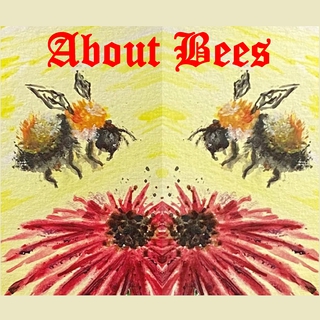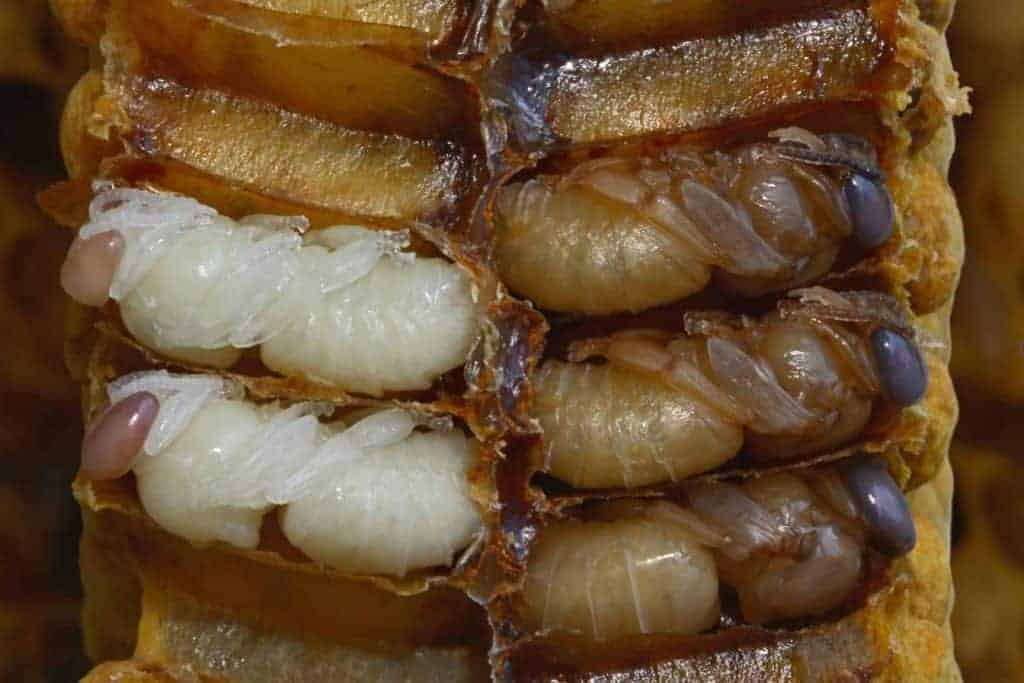An Introduction to Queen Rearing: Part 2 – Advanced Techniques
Queen rearing is an essential skill for beekeepers. It involves creating new queen bees for hives.
Understanding this process can improve hive health and productivity. In our first part, we discussed the basics of queen rearing. Now, in Part 2, we will dive deeper into advanced techniques. This includes selecting the best larvae and creating ideal conditions for queen cells.
Whether you are a seasoned beekeeper or a beginner, this guide will help you enhance your queen rearing skills. Join us as we explore more about this fascinating aspect of beekeeping. Get ready to learn and improve your hive management with these expert tips. Let’s get started on this exciting journey of queen rearing!

Credit: thehoneycompany.com
Queen Cell Production
Queen cell production is a critical step in queen rearing. This process involves creating special cells where new queens will develop. There are different methods to produce these queen cells, each with its own set of techniques and benefits. Below, we will explore two primary methods: grafting techniques and non-grafting methods.
Grafting Techniques
Grafting is a popular method for producing queen cells. It involves transferring young larvae into specially prepared queen cell cups. This method requires precision and care, but it offers high success rates.
Here are the steps involved in grafting:
- Select a frame with young larvae (1-2 days old).
- Use a grafting tool to carefully lift the larvae.
- Place the larvae into a queen cell cup.
- Ensure the larvae are well fed with royal jelly.
- Transfer the cell cups to a queenless starter colony.
Grafting can be challenging for beginners. Proper practice and patience are essential. Tools like the Chinese grafting tool or the German stainless steel tool can make the process easier.
Non-grafting Methods
Non-grafting methods are simpler and less labor-intensive. These methods are ideal for beekeepers who prefer a less hands-on approach.
One popular non-grafting method is the Cloake Board Method. Here are the steps:
- Place a Cloake board between the brood chamber and the super.
- Move a frame with young larvae above the Cloake board.
- Ensure the queen is below the Cloake board.
- The separation mimics a queenless condition, stimulating queen cell production.
Another method is the Hopkins Method. This involves laying a frame of young larvae horizontally over the top bars of the hive. The bees will recognize the need for a new queen and start building queen cells around the larvae.
Non-grafting methods are user-friendly and effective. They are excellent for those new to queen rearing.
Starter And Finisher Colonies
Welcome to the second part of our series on Queen Rearing. Here, we will explore the essential roles of Starter and Finisher Colonies in this fascinating process. Understanding these colonies’ roles will ensure successful queen rearing.
Importance Of Strong Colonies
Strong colonies are vital for queen rearing. They provide the necessary resources and population to nurture new queens. A robust colony has:
- Ample nurse bees
- Abundant pollen and nectar
- Good brood pattern
Strong colonies ensure the developing queens receive the best care.
Managing Starter Colonies
Starter colonies are the initial homes for the queen cells. They need many young nurse bees. These bees feed the larvae with royal jelly. To manage starter colonies:
- Choose a strong colony.
- Remove the queen.
- Add queen cells to the colony.
Starter colonies are queenless. This stimulates the bees to nurture the queen cells.
Transition To Finisher Colonies
Once the queen cells are well-started, they move to finisher colonies. Finisher colonies complete the development of the queen cells. To transition:
- Prepare a finisher colony.
- Place the queen cells in the colony.
- Ensure the colony has a good population.
Finisher colonies are queenright. They provide better temperature and humidity control.
| Starter Colony | Finisher Colony |
|---|---|
| Many nurse bees | Good population |
| Queenless | Queenright |
| Initial care of queen cells | Final care of queen cells |
Understanding these colonies and their roles in queen rearing is crucial. They ensure the health and vitality of your new queens.
Incubation Process
The incubation process is a critical stage in queen rearing. Proper incubation ensures the healthy development of queen larvae. This process involves maintaining the right temperature and humidity levels to create an optimal environment for the larvae.
Temperature Control
Maintaining the correct temperature is crucial for successful queen rearing. The ideal temperature range for incubating queen cells is between 92°F and 94°F (33°C and 34°C). Consistent temperature control helps in the proper development of the queen larvae.
Use a reliable thermostat to monitor and adjust the temperature. A stable environment prevents overheating or undercooling, which can harm the larvae. Consider using an incubator with built-in temperature controls for better precision.
| Temperature Range | Outcome |
|---|---|
| 92°F – 94°F (33°C – 34°C) | Optimal queen development |
| Below 92°F (33°C) | Slow or poor development |
| Above 94°F (34°C) | Risk of overheating and damage |
Humidity Management
Humidity plays an essential role in the incubation process. The ideal humidity level should be around 50% to 60%. Maintaining proper humidity prevents the larvae from drying out and ensures their proper growth.
Use a hygrometer to monitor the humidity levels inside the incubator. If the humidity drops, add a small dish of water to the incubator. This simple step helps maintain the desired humidity level.
- Monitor humidity regularly.
- Keep the incubator closed to maintain levels.
- Add water as needed for adjustments.

Credit: www.boomplay.com
Genetic Selection
In Part 2 of our series on Queen Rearing, we delve into Genetic Selection. This process is crucial for producing queens with specific desirable traits. Genetic selection ensures the health, productivity, and resilience of your bee colonies. Let’s explore some key aspects of genetic selection in queen rearing.
Breeding For Traits
When breeding queens, selecting for specific traits is essential. These traits can significantly impact the success of your bee colony. Here are some common traits beekeepers look for:
- Gentleness: Calm bees are easier to manage and less likely to sting.
- Honey Production: High-yielding queens ensure bountiful honey harvests.
- Disease Resistance: Healthy bees resist diseases better, reducing colony losses.
- Overwintering Ability: Strong queens help colonies survive harsh winters.
By focusing on these traits, you can enhance the overall performance of your bee colonies. It also ensures sustainability and productivity in beekeeping.
Hybrid Vigor
Hybrid vigor, or heterosis, is another important concept in queen rearing. It refers to the improved function of hybrid offspring from diverse genetic backgrounds. This results in stronger, healthier bees. These bees often outperform their purebred counterparts.
Benefits of hybrid vigor include:
- Increased resistance to diseases.
- Better adaptability to environmental changes.
- Enhanced productivity and longevity.
Combining genetics from different strains can yield robust and resilient bee populations. This approach can significantly improve the health and productivity of your apiary.
Incorporating genetic selection in queen rearing can lead to healthier, more productive colonies. By understanding and applying these principles, you can enhance your beekeeping success. Stay tuned for more insights in our Queen Rearing series.
Queen Health Management
Queen health management is crucial for successful queen rearing. Ensuring the queen’s health guarantees a strong and productive colony. This section will cover two important aspects: disease prevention and nutritional needs.
Disease Prevention
Keeping the queen free from diseases is essential. Regular inspections help detect any early signs of illness. Maintain a clean hive environment to reduce infection risks. Use sanitary tools and equipment during hive inspections. Isolate any infected bees to prevent spreading. Treat the colony with approved medications if needed. Always follow guidelines for safe and effective treatment.
Nutritional Needs
A healthy queen needs proper nutrition. Provide a balanced diet to support her development. Ensure the colony has access to high-quality pollen and nectar sources. Supplement with protein patties if natural sources are scarce. Monitor the colony’s food stores regularly. Replenish as needed to avoid malnutrition. Proper nutrition leads to a robust and fertile queen, ensuring colony strength.

Credit: www.perfectbee.com
Record Keeping
Record keeping is essential in queen rearing. Maintaining accurate records helps monitor the progress and success of your queen bees. Detailed records can help you track lineage and performance, ensuring a strong, healthy hive. Let’s explore the importance of record keeping in queen rearing.
Tracking Lineage
Tracking the lineage of your queens is crucial. It helps in maintaining genetic diversity and preventing inbreeding. Keeping detailed records of the parentage of each queen bee ensures that you are aware of their heritage. This can be done by:
- Documenting the parent queen’s traits
- Recording the date of egg laying
- Noting the hive from which the queen was raised
By tracking lineage, you can select queens with desirable traits for future breeding. This leads to stronger, more resilient hives.
Performance Records
Keeping performance records is equally important. It allows you to monitor the productivity and health of each queen. Consider recording the following:
| Performance Metric | Details to Record |
|---|---|
| Honey Production | Amount of honey produced over time |
| Brood Pattern | Quality and consistency of brood pattern |
| Swarming Tendency | Frequency of swarming behavior |
| Disease Resistance | Incidence of disease and pests |
By maintaining these records, you can identify high-performing queens. This helps in making informed decisions for future breeding and hive management.
Troubleshooting
In the world of queen rearing, encountering problems is common. Troubleshooting these issues is essential for successful queen production. Understanding the common issues and their solutions can help you manage your hive better. Let’s dive into some frequent problems and effective solutions.
Common Issues
One common issue is poor acceptance of queen cells. This occurs when the worker bees reject the new queen cells. Another problem is the failure of queens to mate. Sometimes, queens do not return from their mating flights. Disease and pests can also affect queen rearing. These can weaken the hive and reduce queen quality.
Solutions
For poor acceptance of queen cells, ensure the hive is queenless before introducing new cells. This makes the bees more likely to accept them. To address mating failures, provide a safe environment for mating flights. Ensure there are enough drones and monitor the weather. To combat disease and pests, maintain hive cleanliness. Regularly inspect for signs of disease and act quickly if detected.
By addressing these common issues, you can improve your queen rearing success. Regular monitoring and quick responses are key.
Frequently Asked Questions
What Is Queen Rearing?
Queen rearing is the process of breeding and raising new queen bees. It is essential for maintaining strong, productive hives.
Why Is Queen Rearing Important?
Queen rearing ensures hive health and productivity. A strong queen means a strong colony, essential for effective pollination and honey production.
How Do You Start Queen Rearing?
Begin by selecting strong, healthy colonies. Use specialized tools and techniques to raise new queens from larvae.
What Equipment Is Needed For Queen Rearing?
Key equipment includes queen cages, cell cups, grafting tools, and incubators. Proper tools ensure successful queen development.
Conclusion
Queen rearing can seem complex, but practice makes it easier. Start small and learn from each attempt. Your bees will benefit from strong, healthy queens. Keep observing and adjusting your methods. Patience and consistency are key. You’ll soon see improvement in your hive’s health.
Happy beekeeping!


